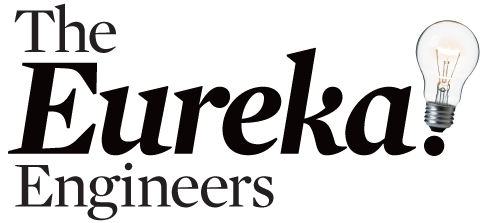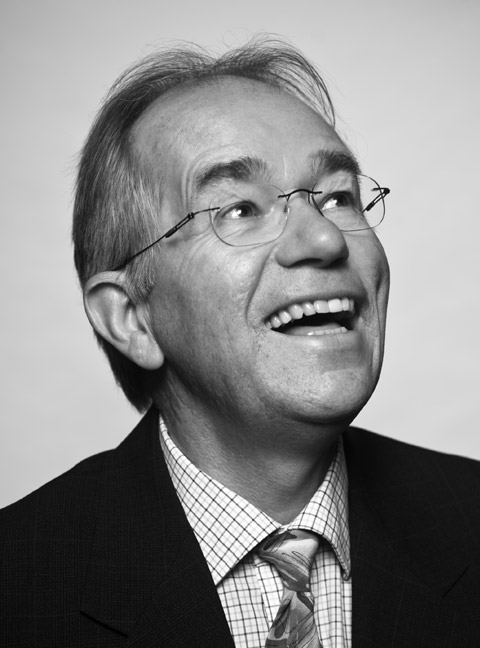
Robert Magnusson
Title
Texas Instruments Distinguished University Chair in Nanoelectronics
His Eureka Moment
Using light and nanostructures to make new devices that can be used in medical diagnostics and screening tests
Quotable
“We are all trying to help mankind move forward, to be healthier and happier.”
Next time you fill up your car, thank materials science and engineering Professor Nai Yuen Chen for helping make your fuel cheaper, cleaner, and more efficient. And if that full tank leads you to a medical center, send a note of appreciation to College of Engineering Dean Khosrow Behbehani, whose work with respiratory ventilators keeps millions of people breathing every day. Electrical engineer Robert Magnusson, on the other hand, is responsible for providing the doctors inside with faster, more effective diagnostic tests. And don’t forget the contributions of Professor George Kondraske, who is making it possible to quantifiably measure and improve almost every aspect of human performance—including medical procedures.
These four distinguished engineers have dedicated their professional lives to discovering solutions to society’s most pressing problems. Little wonder then, that when it came time for the National Academy of Inventors to select charter fellows for its inaugural class, Drs. Chen, Behbehani, Magnusson, and Kondraske all made the cut. The honor reflects the magnitude of their individual achievements as well as the quality of research and development pursued at UT Arlington.
The National Academy of Inventors (NAI) recognizes academic inventors who demonstrate a highly prolific spirit of innovation in creating noteworthy inventions that make a tangible impact on quality of life, economic development, and the welfare of society. UT Arlington’s quartet joined 94 other fellows representing 54 universities and nonprofit research institutes. Together, the inaugural class holds more than 3,200 U.S. patents and includes eight Nobel laureates, two fellows of the Royal Society, and many other prestigious award-winners.
UT Arlington Vice President for Research Carolyn Cason says honors like this bring tremendous respect to the University. “This is a way to recognize innovators who are driving the science forward. This kind of membership is one of the metrics for being known as an outstanding university. And it’s a recognition of the excellence of our faculty and our programs.”
A Good Night’s Sleep
The best part about being an engineer is developing something like this - something that really helps people.
For years, Khosrow Behbehani has devoted his research and development energies toward one goal—helping people breathe. While working for a biomedical company, he helped develop the first microprocessor-based ventilator, the type that is now used in almost all surgeries and with almost all critical-care patients.
“I worked on the microprocessor/controller for the respirator,” he explains. “It became a successful product and has since been deployed around the country and around the world. The best part about being an engineer is developing something like this—something that really helps people.”
After Behbehani joined the UT Arlington faculty, a colleague told him about a group of Fort Worth physicians looking for someone with experience in developing respiratory products. The group wanted to improve patients’ use of the devices that prevent sleep apnea, and they thought the bioengineer had just the knowledge they needed.
Sleep apnea is a common disorder in which patients either stop breathing for a few seconds or even minutes while sleeping, or they take shallow breaths. It significantly disrupts their sleep patterns, often moving them from deep sleep to light sleep. As a result, their sleep quality is low and patients feel tired and listless.
Sleep apnea is a leading cause of excessive daytime sleepiness. While it sounds fairly benign, the disorder can lead to much more serious problems, including an increased risk of high blood pressure, heart attack, and stroke. It can also increase the risk or worsen the symptoms of heart failure, make arrhythmias (or irregular heartbeats) more likely, have a negative impact on brain function, and increase the chances of having work-related or driving accidents.
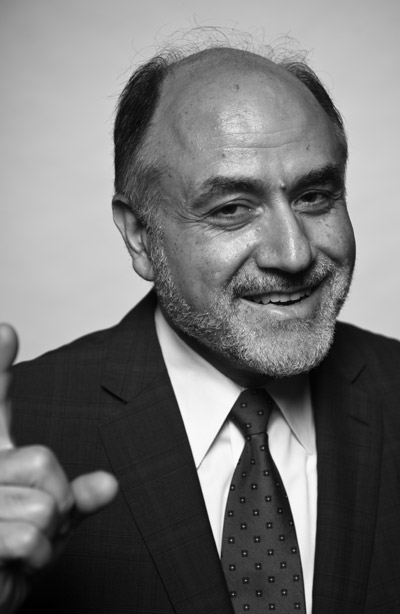
Khosrow Behbehani
Title
Dean of the College of Engineering
His Eureka Moment
Creating a more comfortable, effective sleep apnea treatment machine
Quotable
“The physicians wanted to improve patient use of the devices, so I set out to come up with some sort of solution—a way to help patients use the machines regularly.”
The most common type of sleep apnea is obstructive—when the airway either partially or fully collapses to impede breathing. To remedy this, doctors employ a Continuous Positive Airway Pressure machine (commonly called CPAP), which applies pressurized air into the patient’s nostrils through a mask to prevent the collapse of the airway. But the physicians seeking Behbehani’s input were concerned that many of those patients failed to consistently use their machines.
“It became apparent that patients did not like the way the pressurized air was forced through their nostrils. In some way, it was uncomfortable for them, and that discomfort caused them to stop using the machine,” Behbehani says. “The physicians wanted to improve patient use of the devices, so I set out to come up with some sort of solution—a way to help patients use the machines regularly.”
Early CPAP machines worked at only one air pressure setting determined by the results of an initial sleep study. Behbehani’s research convinced him that a machine with variable pressures, where the patient could begin the sleep process by selecting a relatively low-pressure level that would be comfortable for drifting off, might be used more consistently.
“We developed an APAP (Automatic Positive Airway Pressure) machine that has the smarts to respond to the patient by increasing the air pressure when apnea (an obstruction) is about to occur,” he says. “Since the threat of apnea comes when the patient is asleep, he or she does not have to feel the high pressure when awake. In fact, if there is no obstruction during sleep, the pressure remains where it was set originally. This way, there is less pressure in the airway when it is not needed, and it is more comfortable for the patient.”
Behbehani and the physicians’ group successfully designed and demonstrated the function and effectiveness of the new machine, then licensed it to a firm for marketing. Within a few years, it sold more than a half-million devices. Studies conducted on the APAP machine show that it’s just as effective as the CPAP.
“The biggest benefit is that patients get a good night’s sleep,” Behbehani says.
Diagnostics On Demand
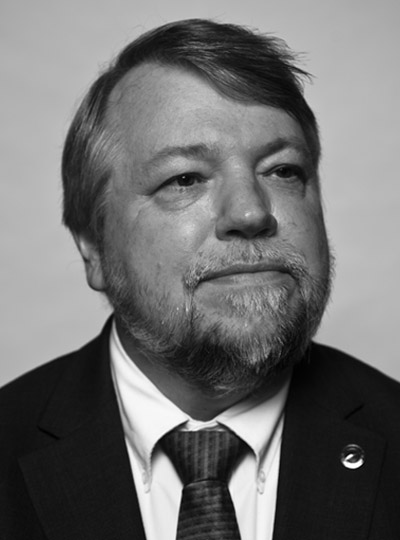
George Kondraske
Title
Professor of Electrical Engineering
His Eureka Moment
Developing a theory that provides a framework for modeling systems, human tasks, and the interplay between the two
Quotable
“My devices may measure different processes, but all address how one or more
human systems work.”
Electrical engineering Professor Robert Magnusson’s research also deals with improving health care, though he works on a much smaller scale. The Texas Instruments Distinguished University Chair in Nanoelectronics uses light and nanostructures—microscopic, artificially created devices, materials, or particles—to make new devices that may benefit medical diagnostics.
To better understand the scale of the products he works with, Magnusson says to imagine “thousands of sensors fitting in a space the size of a fingernail.” Currently, he fabricates nanostructures for antibody-loaded test kits that can do a complete, almost immediate health analysis.
“This development is very good for medical diagnostics, for all types of screening tests,” he explains. “With this system, some applications should involve developing early-detection systems for cancers, as well as doing complete DNA analysis.”
An engineer places the nanostructures on plastic plates, adds the biological materials to be tested, and—based on the resulting color changes in the nanostructures—detects and analyzes the bioreaction.
“There is nothing else like this system,” Magnusson says. “It is designed around a biosensor that can detect everything about a bioreaction under study. It follows the molecular binding dynamics in time and simultaneously records what is going on in the background solution. The fundamental sensor is easy to fabricate and economic in use. We call it ‘the complete biosensor’ for these reasons.” Because the testing devices are so small, Magnusson sees tremendous opportunities for their application as hand-held medical diagnostic tools used in the field, and as especially useful to soldiers, police officers, firefighters, and other emergency medical personnel.
“What if you could make medical diagnostics part of your everyday life?” he asks. “You spit on a little sensor, and….”
Exciting as the medical applications appear, Magnusson’s nanostructures may revolutionize other industries as well. He’s working with the Air Force and industrial manufacturers to use them in new types of lasers, and with Homeland Security to detect things like anthrax in airports or pollutants in our food supply. He’s also developing nanostructures for use in solar cells, which could make solar energy more affordable.
“Our solar cells are much thinner and use much less material than those currently in use, but development work remains to make them more efficient,” he says.
Magnusson sees his NAI induction as a stamp of recognition for his and his colleagues’ work: “It gives a high profile to the faculty, and you want to have a faculty who are inventing things. We are all trying to help mankind move forward, to be healthier and happier.”
Formula For Success
Fellow inductee George Kondraske wants to actually measure that forward movement Magnusson describes. The electrical engineer believes that wherever there’s a human and a task, there’s the possibility of making the work more effective, efficient, and successful.
“My devices may measure different processes, but all address how one or more human systems work,” he explains.
Before, we didn’t really celebrate these kinds of achievements. So the NAI is here to do just that—to laud work that is new, unique, never-before invented.
The wide-ranging applications of Kondraske’s research led to the development of his General Systems Performance Theory (GSPT). The theory, applicable to any system-task, is simple: To better understand the fundamental principles of human performance, you must focus on simple hypothetical systems and tasks, rather than the whole human system and all its complexity.
GSPT provides a framework for modeling systems (like human beings), human tasks (in all their variety), and the interplay between the two by using a modeling abstraction that centers on the notion of “performance.” Humans have a set of “performance resources,”—such as accuracy, speed, strength, and intellectual capacity—that reflects the unique qualities that characterize how well they perform a function. For the system (the human) to be considered successful, resource availability must exceed resource demand.
“We’re also working to incorporate measures of personality traits like conscientiousness as performance resources,” Kondraske says. “Combine that with other measurements and you can predict the success of an employee in a factory or a student in a school.”
Currently, neurologists who treat patients with Parkinson’s disease use GSPT to determine the effectiveness of their therapies. But Kondraske sees much more potential in his measuring system.
“For example, measurements of the tasks involved in driving a car could help to determine a person’s readiness to return to driving after injury,” he says. “Often, there are controversies over when to take away the keys. This system would provide hard data to use in making a decision.” He also plans to develop models to determine when athletes should return from injury.
The field of education is rife with possibilities for GSPT applications. In fact, the theory has already pinpointed a simpler, more accurate way to measure classroom success by calculating grades differently.
“Grade-point average is not what anyone should care about,” Kondraske says. “What we would recommend is to multiply grades rather than average them. If you’re weak in one area, say, English, then by averaging GPA you imply that one area can compensate for—or substitute for—something else, maybe your math skill. But English and math are apples and oranges. If you multiply, however, then if there is a low score somewhere, it really shows up and reflects a student’s capacity to do tasks that need both math and English skills.”
When your research encompasses the entire spectrum of human activity, the possibilities for its use are many and varied. Applications for GSPT are limited only by interest and funding. As Kondraske says, all he needs is a human and a task.
Comprehensive Catalyst
The holder of 126 patents, Nai Yuen Chen was already a member of the National Academy of Engineers when the NAI formed, and thus was automatically inducted into the organization’s first class of fellows. A longtime member of the research team at Mobil Oil Company (now Exxon Mobil), he and his fellow researchers revolutionized significant portions of the petroleum business.
Much of his work involves using new synthetic zeolites as catalysts in chemical reactions designed to improve the qualities and usefulness of petroleum products—things used every day by average consumers. While zeolites are commonly used as commercial absorbents, Chen saw their further potential and pioneered their application as catalysts—materials that speed up chemical reactions.
“My boss at the time, the world-renowned scientist Dr. Paul Weisz, had discovered a new type of catalysis using a small pore crystalline aluminosilicate zeolite known as Linde Type A,” Chen says. “He coined the term ‘shape-selective’ catalysis to describe the discovery, and I was able to extend the shape-selective catalysis to synthetic medium pore zeolites.”
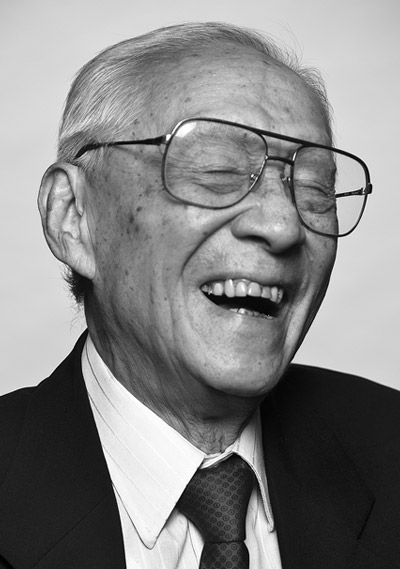
Nai Yuen Chen
Title
Distinguished Research Professor in Materials Science and Engineering
His Eureka Moment
Using synthetic zeolites as catalysts in chemical reactions to improve petroleum products
Quotable
“Our work made a huge difference in reducing the cost of refining crude oils into commercial products.”
Further research resulted in the development of catalysts that selectively remove the waxy components of many kinds of commercial petroleum products, such as diesel fuel, home heating oil, and lubricating oils.
“In cold climates, the wax in the crude oil causes it to become viscous,” he explains. “It’s no longer liquid and it won’t flow, which makes it unusable.”
In earlier days, petroleum refineries used solvents to remove the wax, but that process was slow and expensive. By using the catalysts, Chen and his team were able to convert the waxy components into other useful products.
Continued work with catalysts led the researcher to develop better and more affordable methods for producing para-xylene, a key raw material in the production of polyester fibers. The ubiquitous fibers are found in containers for household chemicals, toiletries, and cosmetics; in fabrics for curtains, upholstery, and clothing; in microwave oven packing material; in films for x-rays, magnetic tapes, photographs, and electrical insulation; and in packages for boil-in-bags, processed meats, shrink films, and blister packs.
Honoring innovations as beneficial as Chen’s catalysts—and Behbehani’s APAP machine, Magnusson’s nanostructures, and Kondraske’s performance theory—is exactly why the National Academy of Inventors was established.
“We realized that before, we didn’t really celebrate these kinds of performances and achievements," says Dr. Cason, explaining why UT Arlington became a charter member of the organization. “So the National Academy of Inventors is here to do just that—to laud work that is new, unique, never-before invented.”
We can only imagine what the four professors will create next.
Nai Yuen Chen
Distinguished Research Professor in Materials Science and Engineering
His Eureka Moment
Using synthetic zeolites as catalysts in chemical reactions to improve petroleum products
Quotable
“Our work made a huge difference in reducing the cost of refining crude oils into commercial products.”













